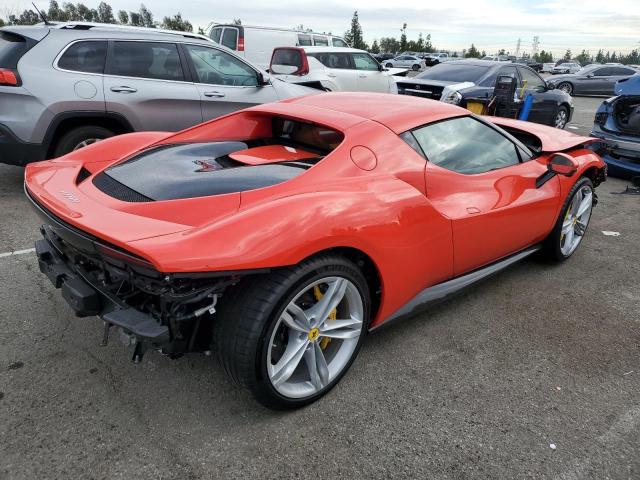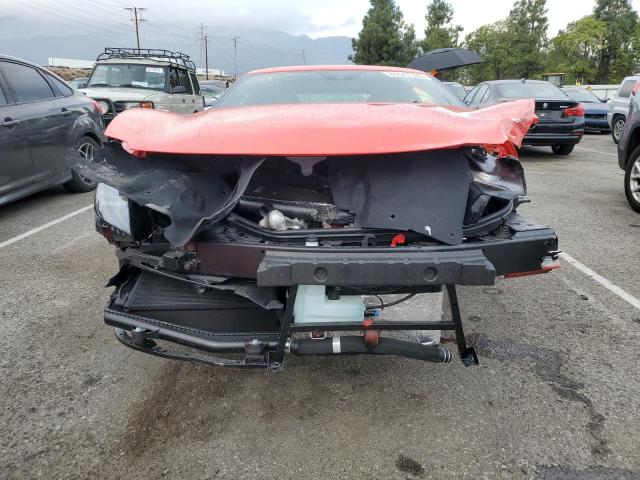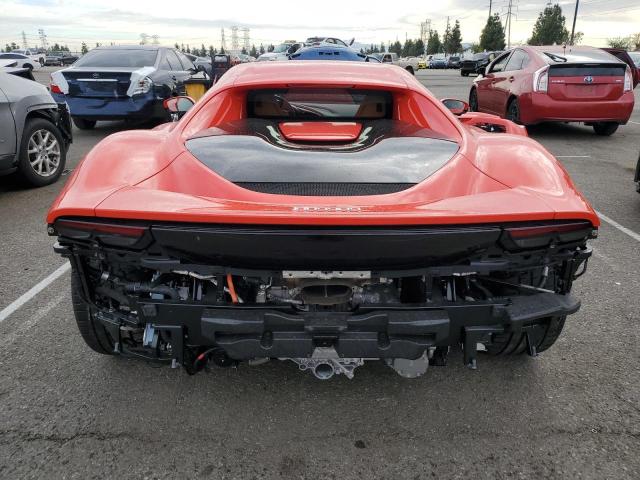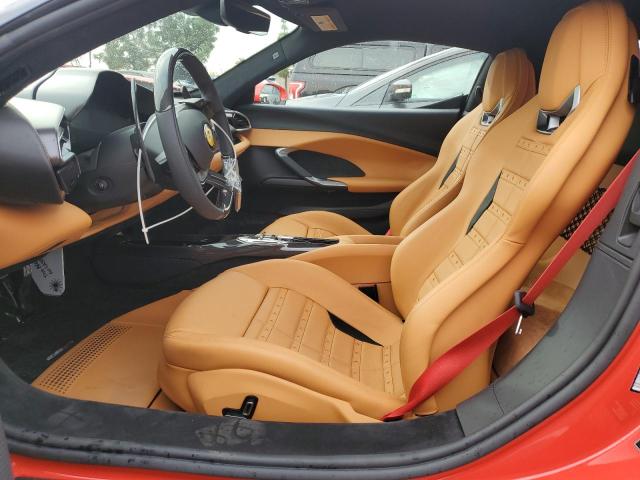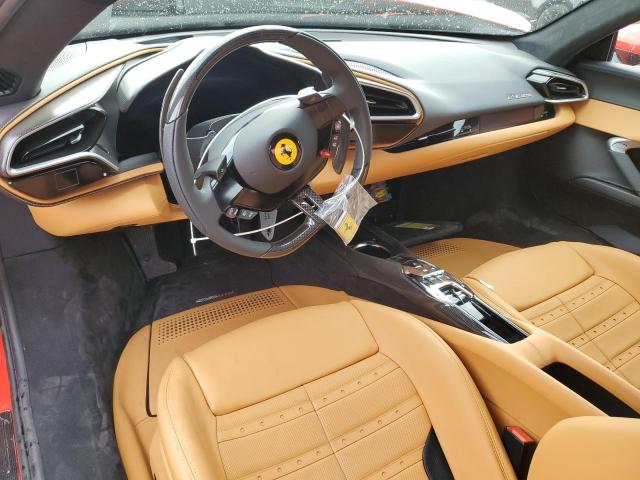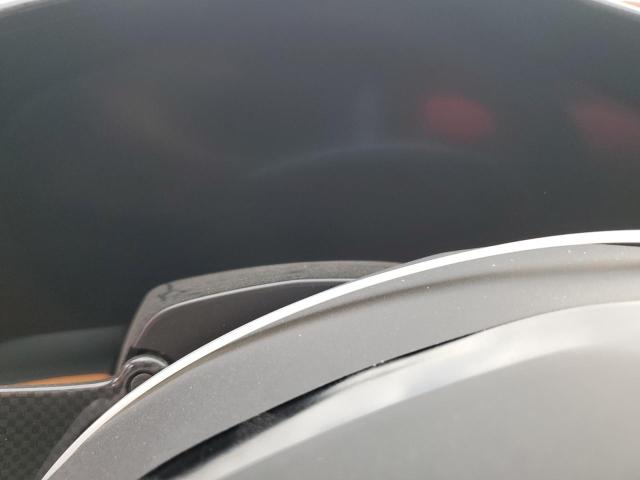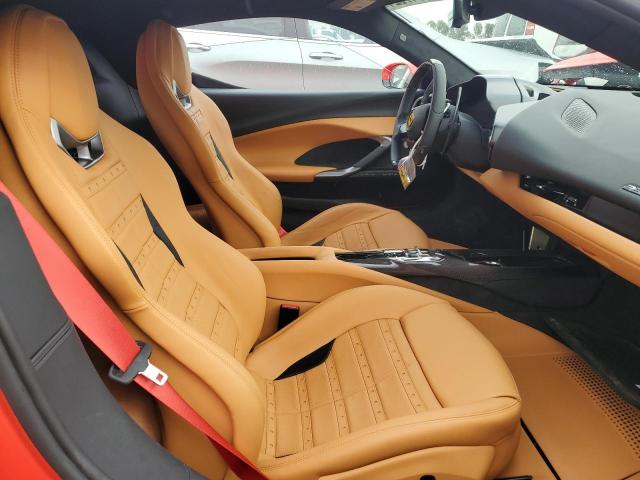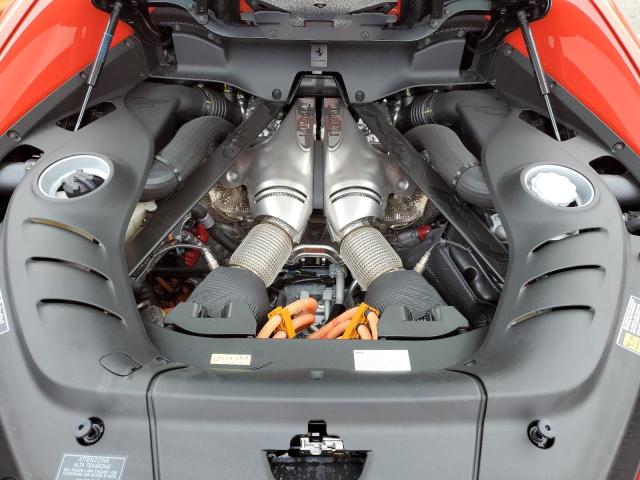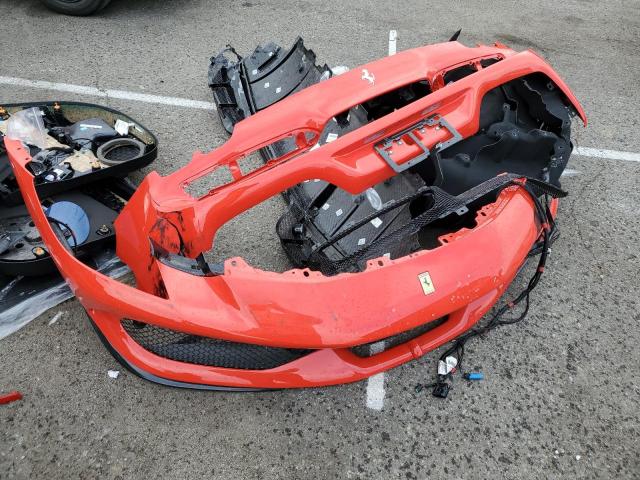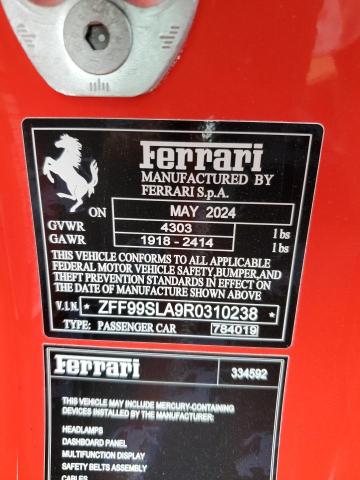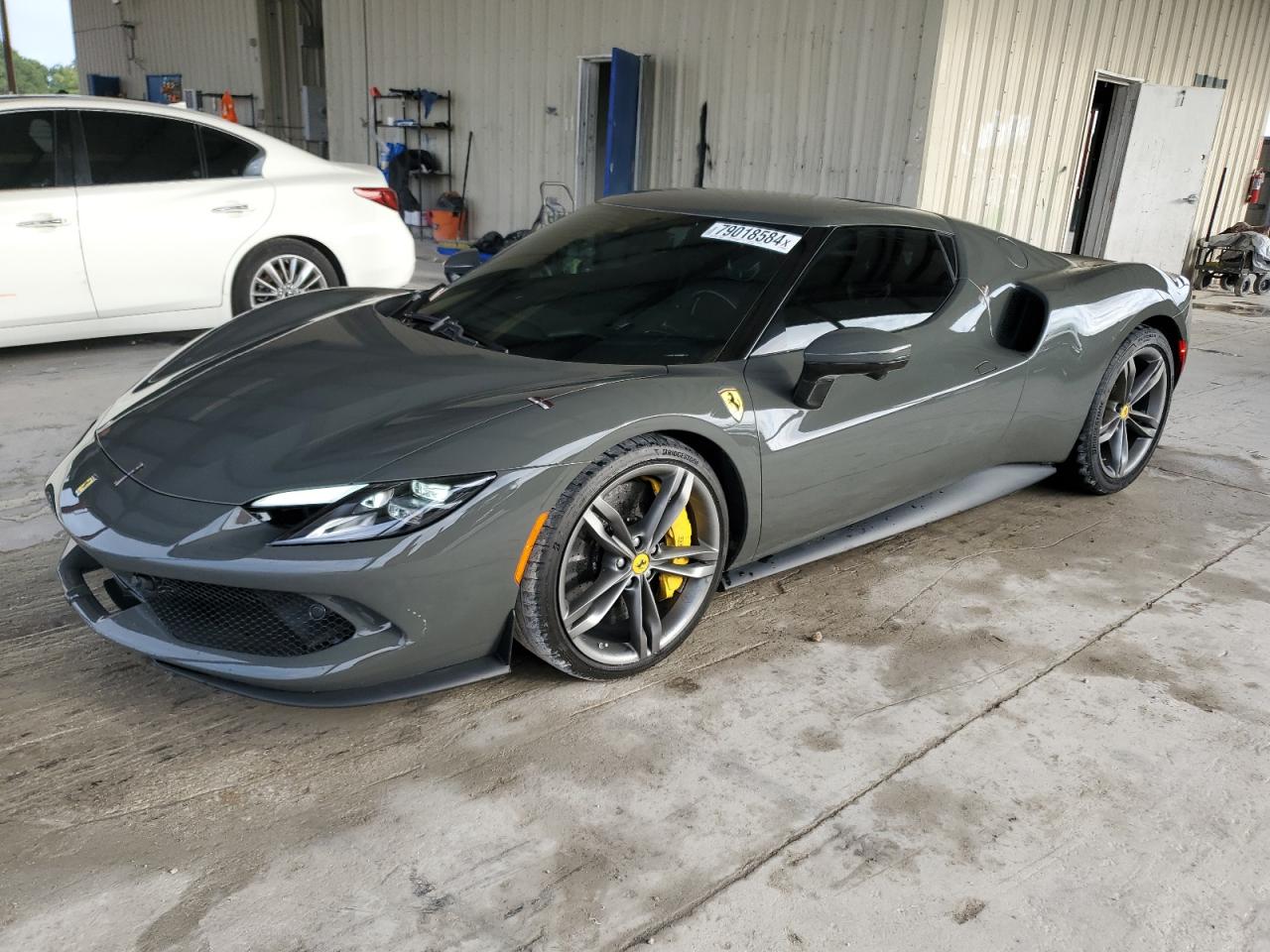2024 FERRARI 296 GTB | ZFF99SLA9R0310238
 ❯
❯Lot details
- Sale Date2025-02-18
- Lot Number81647524
- ACV427134 $
- Sale documentCA - SALVAGE CERTIFICATE
- LocationCA - RANCHO CUCAMONGA
- Odometer0 miles (0 km)
- Primary DamageSIDE
- SellerAIG INSURANCE
Vehicle specifications
1
~$340,000
Engine: 3.0L twin-turbocharged V6 + rear electric motor
Torque: 740 Nm
0–100 km/h: ~2.9 s
The Ferrari 296 GTB represents a bold leap into the electrified performance future without sacrificing Ferrari’s visceral heritage. Powered by a 663-horsepower twin-turbo V6 paired with a 167-hp rear-mounted electric motor, it delivers a combined 830 hp exclusively to the rear wheels — making it the most powerful RWD-only Ferrari road car ever built.
Thanks to the instant torque from the electric unit and razor-sharp throttle response from the compact V6 (with an 8,500 rpm redline), the 296 offers hypercar-level acceleration and precise weight distribution. Its plug-in hybrid system enables up to 25 km of silent electric-only driving, but its real purpose is performance enhancement, not efficiency.
With a new chassis, shortened wheelbase, and active aerodynamics, the 296 GTB exhibits exceptional agility and cornering speed. In Assetto Fiorano configuration, with lightweight door panels, Lexan rear glass, and Multimatic dampers, it’s fully optimized for track use while retaining daily usability.
The interior pairs Ferrari’s digital cockpit evolution with F1-inspired controls, while the exterior’s sculpted simplicity echoes classic models like the 250 LM. Yet beneath that elegance lies a modern monster — a plug-in hybrid supercar that’s lighter, faster, and more focused than many V8 predecessors.
With no compromise between technology, emotion, and raw ability, the Ferrari 296 sets a new benchmark for mid-engine performance and earns a decisive place in the performance registry as the most technically advanced V6 ever offered by Maranello.
Final Bid Ferrari 296 (2024)
$123,000
$137,000
$151,000
Body Styles
Coupe (296 GTB) – a sleek, mid-engine berlinetta that introduces Ferrari’s new V6 hybrid era. The GTB’s proportions are compact, with a Kamm-tail rear, flying buttresses, and minimalist front-end styling. Aerodynamic innovations include an active rear spoiler, integrated vortex generators, and a compact e-drive module placed between engine and gearbox.
Convertible (296 GTS) – a folding hardtop variant of the GTB that maintains full chassis rigidity and aerodynamic performance. The roof mechanism operates in 14 seconds, and is stowed under a sculpted decklid. GTS-exclusive options include a transparent engine cover, carbon aero accents, and Assetto Fiorano trim for extreme performance.
Model Name Meaning (Manufacturer)
“296” reflects the engine’s displacement (2.9 liters) and 6-cylinder layout. It is Ferrari’s first road car with a V6 engine since the Dino lineage, and the first plug-in hybrid V6 in Ferrari history. “GTB” stands for Gran Turismo Berlinetta, while “GTS” is Gran Turismo Spider, aligning it with Ferrari’s classic nomenclature.
Model Name Meaning (Languages)
“296” is globally understood as a numeric technical designation, and “GTB”/“GTS” are well-established Ferrari badges across all markets. The return of the V6 – once seen only in Ferrari’s Dino sub-brand – now reflects lightness, balance, and modern hybrid performance, making the name a symbol of evolution.
Body & Interior Colors and Rims
The 296 lineup offers both classic and contemporary hues: Rosso Corsa, Giallo Modena, Nero Daytona, and Grigio Silverstone, as well as Blu Corsa, Verde British, and Argento Nurburgring. Tailor Made finishes include Rosso Imola, Giallo Triplo Strato, Bianco Cervino, and historic liveries with stripe kits or matte textures (especially for Assetto Fiorano).
The cabin features Ferrari’s latest minimalist architecture with a curved 16” instrument display, capacitive touch controls, and Alcantara or leather finishes throughout. Color options include Blu Sterling, Cuoio, Rosso Ferrari, Beige Tradizione, and Tortora, with optional contrast stitching, carbon fiber inserts, and LED steering wheel. Assetto Fiorano trims introduce Alcantara race seats, door straps, and track telemetry integration.
Wheels are 20-inch forged alloys, available in silver, matte black, diamond-cut, or satin finishes. Optional carbon fiber wheels reduce weight significantly. Brake calipers can be ordered in red, yellow, black, aluminum, or custom Atelier hues. Aero elements like the rear spoiler and diffuser can be optioned in gloss carbon, particularly on GTS and Fiorano variants.
Top Expensive Options
- Assetto Fiorano Package (Multimatic shocks, carbon door panels, track aero): ~$35,000
- Carbon Fiber Wheels: ~$18,000
- Triple-Layer or Matte Special Paint (e.g., Rosso Imola, Giallo Triplo Strato): ~$10,000–20,000
- LED Carbon Steering Wheel with Touch Controls: ~$6,000
- Passenger Display + Central Infotainment Pack: ~$4,800
- Premium JBL Audio + Smartphone Integration: ~$4,200
- Carbon Engine Bay + Transparent Cover (GTS only): ~$7,000
- Daytona Carbon Race Seats with Embossed Cavallino: ~$6,500
- Ferrari Track Telemetry + Lap Timer: ~$5,000
- Full Carbon Exterior Kit (Front Splitter, Sills, Rear Diffuser): ~$15,000
vs Competitors
The Ferrari 296 GTB and GTS represent a revolutionary shift for the brand, being the first-ever Ferrari road cars with a V6 hybrid powertrain. Despite downsizing from a V8 to a 3.0-liter twin-turbo V6 paired with an electric motor, the 296 delivers a staggering 830 horsepower — combining electrification with spine-tingling emotion and razor-sharp dynamics. Its competitors include the McLaren Artura, Lamborghini Huracán Tecnica/STO, Porsche 911 Turbo S, Aston Martin Vantage, and, at a higher tier, the McLaren 750S and Audi R8 V10 Performance (discontinued but still relevant in comparisons).
Against the McLaren Artura, the 296 stands out with more power, sharper throttle response, and richer emotional character. While both feature hybrid V6 layouts and similar performance goals, the 296 feels more alive — with more evocative sound, more polished interior execution, and an unmistakably Ferrari sense of occasion. The Artura is lighter and impressively agile, but Ferrari’s superior power delivery, e-diff tuning, and steering feel give it the edge in driving involvement.
Compared to the Lamborghini Huracán Tecnica or STO, the 296 swaps out the glorious naturally aspirated V10 for a hybridized punch — but it outpaces the Lambo in both straight-line speed and agility. The Huracán may still win on sound and rawness, but it’s also heavier, older in tech, and lacks the electric-only capabilities or torque fill that the Ferrari leverages so effectively. The 296 also offers plug-in range for short emissions-free urban trips, something absent in its rivals.
In relation to the Porsche 911 Turbo S, the 296 is more exotic and track-focused, while the Porsche offers a broader comfort envelope and daily usability. The 911 Turbo S is brutally fast and technologically advanced, but the 296 feels lighter, quicker to react, and more emotionally rewarding, especially on a twisty road or racetrack. Porsche offers unmatched practicality — but Ferrari wins the soul.
Against the Aston Martin Vantage, the 296 plays in a different league altogether. The Vantage is more of a grand tourer with sporting flair, whereas the 296 is a full-fledged mid-engine supercar with F1-inspired hybrid tech and a chassis fine-tuned for precision. The Ferrari easily outperforms it in every metric, but the Vantage appeals more to those wanting GT comfort with occasional thrills — not raw lap times.
Stacked against the McLaren 750S, a rear-drive twin-turbo V8 machine with intense focus on weight and aero, the 296 faces a serious challenger. The 750S is lighter and more analog in feel, but the Ferrari hits back with more torque, a broader performance envelope, and a hybrid system that enhances rather than dilutes the driving experience. Both are blisteringly fast and engineered to perfection — the Ferrari is more theatrical, the McLaren more surgical.
Even the now-discontinued Audi R8 V10 Performance lags behind the 296 in terms of innovation and outright capability, though its naturally aspirated charm still resonates. The 296, however, sets a new standard by proving that hybridization can enhance emotion and response, not mute them.
Fun Fact
The 296’s 3.0L V6 is the most powerful six-cylinder ever fitted to a road-legal production car, producing 221 hp per liter – a record at its launch. It’s also Ferrari’s first hybrid model with a fully electric rear-drive mode, allowing you to drive up to 25 km (15.5 mi) in silence, despite its ability to outpace V12s when unleashed.




